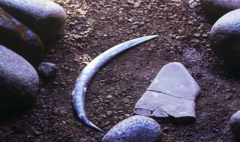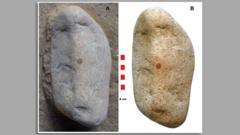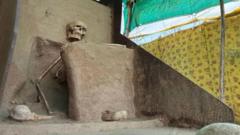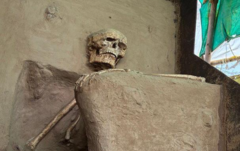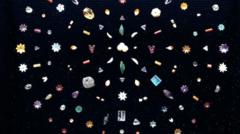A remarkable runestone, uncovered in 2015 after the collapse of two trees in northern Ontario, features intricate carvings and a depiction of a boat. Experts are now investigating its origins and asking the public for insights into this potential link to ancient explorers.
Ancient Runestone Discovery in Canada: Unveiling North America’s Possible Past

Ancient Runestone Discovery in Canada: Unveiling North America’s Possible Past
Researchers reveal the discovery of a mysterious runestone with 255 carvings found in northern Ontario, reigniting discussions about early explorers.
In a quiet corner of northern Ontario, the remains of a centuries-old mystery have emerged. Researchers have recently revealed a runestone inscribed with 255 runes and an image depicting a boat, discovering it five years ago when two trees fell and exposed the stone to view. Initially discovered on private property near Wawa, the stone had long been concealed under layers of soil, moss, and roots, raising questions about who could have carved it and when.
The stone's mysterious carvings initially drew parallels to Viking activity in North America, with scholars noting that only one verified Viking settlement has been found in the continent, located in Newfoundland. However, investigations soon dismissed this notion, asserting that the Ontario runestone is not a modern forgery akin to the notorious Kensington Runestone of Minnesota, which was exposed as a 19th-century fabrication.
"This discovery is extraordinary," stated Kristel Zilmer, a runologist from the University of Oslo, who is not connected to this project. She emphasized the stone's importance, suggesting it demonstrates how ideas and knowledge could have traveled with people, potentially leaving remnants like this stone in unexpected locations.
Among those taken aback by the revelation was Ryan Primrose, the archaeologist called to explore the site. "I never anticipated finding a runestone in my career," he remarked, highlighting the significance of this find in shaping our understanding of hidden histories in North America. As researchers continue to analyze the artifact, they are inviting public engagement, eager to unlock further secrets that this ancient stone may hold.
The stone's mysterious carvings initially drew parallels to Viking activity in North America, with scholars noting that only one verified Viking settlement has been found in the continent, located in Newfoundland. However, investigations soon dismissed this notion, asserting that the Ontario runestone is not a modern forgery akin to the notorious Kensington Runestone of Minnesota, which was exposed as a 19th-century fabrication.
"This discovery is extraordinary," stated Kristel Zilmer, a runologist from the University of Oslo, who is not connected to this project. She emphasized the stone's importance, suggesting it demonstrates how ideas and knowledge could have traveled with people, potentially leaving remnants like this stone in unexpected locations.
Among those taken aback by the revelation was Ryan Primrose, the archaeologist called to explore the site. "I never anticipated finding a runestone in my career," he remarked, highlighting the significance of this find in shaping our understanding of hidden histories in North America. As researchers continue to analyze the artifact, they are inviting public engagement, eager to unlock further secrets that this ancient stone may hold.


